LED声压指示器的制作
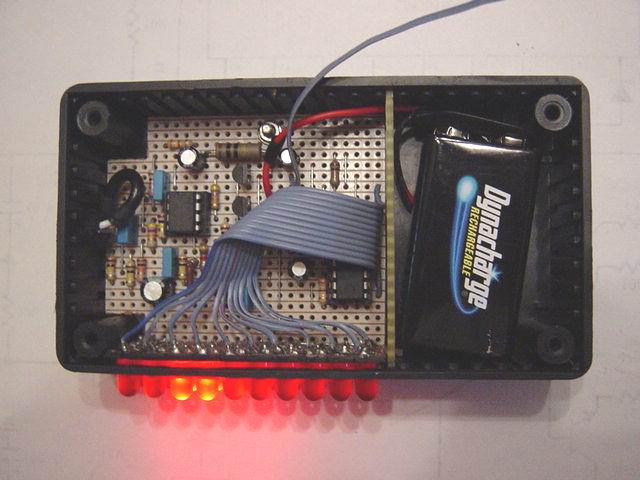 实物图
实物图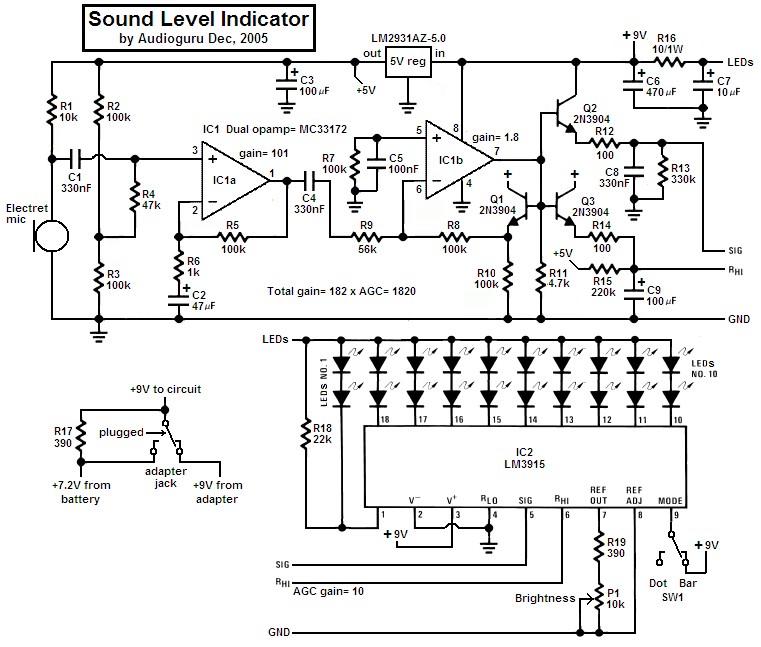
LED声压指示器电路原理图
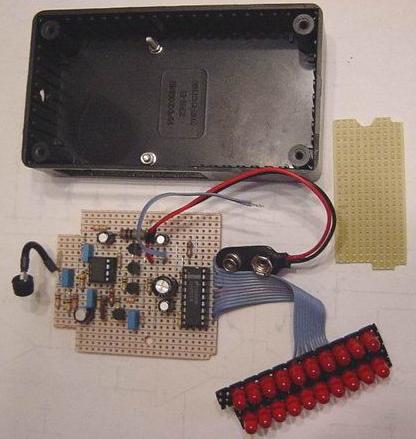
LED声压指示器安装图
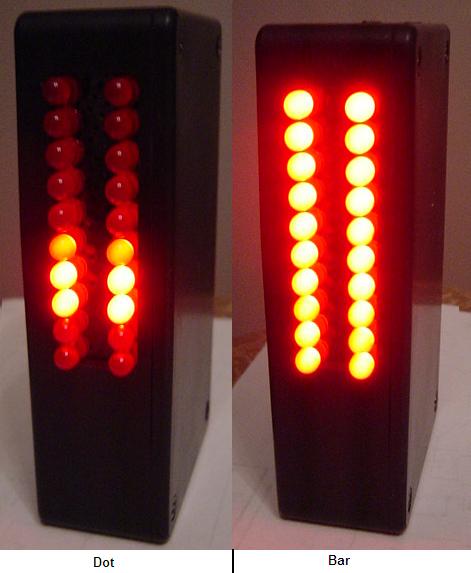
LED声压指示器
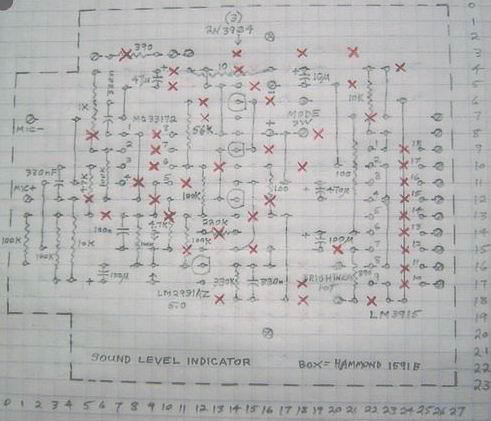
LED声压指示器面包板制作图元件清单
R1--10k
R2, R3, R5, R7, R8, R10--100k
R4--47k
R6--1k
R9--56k
R11--4.7k
R12, R14--100
R13--330k
R15--220k
R16--10/1W
R17, R19--390
R18--22k
P1--10k audio-taper (log) pot
C1, C4, C8--330nF
C2--47uF/10V
C3, C9--100uF/10V
C5--100nF
C6--470uF/16V
C7--10uF/16V
IC1--MC33172P
IC2--LM3915P
5V reg--LM2931AZ5.0
LEDs--MV8191 super-red diffused
Electret microphone--two-wire type Box--Hammond 1591B
Battery--9V Ni-Cad or Ni-MH
SW1--SPST switch
Adapter jack--switched
原文:
This project uses an LM3915 bar-graph IC driving two sets of ten LEDs for a 30dB range. The circuit is unique because it has an additional range of 20dB provided by an automatic gain control to allow it to be very sensitive to low sound levels but it increases its range 20dB for loud sounds.
The LEDs are operating at 26mA each with the brightness control at maximum, which is very bright. The circuit has a switch to select the modes of operation: a moving dot of light, or a bar with a changing length.
My prototype has a little 9V Ni-Cad rechargeable battery in it to be portable and the battery is trickle-charged when the project is powered by a 9V AC-DC adapter.
Circuit Description
1) The electret microphone is powered by and has a load of R1 from an LM2931 5V low-dropout regulator.
2) The 1st opamp stage is an audio preamp with a gain of 101.
3) The 2nd opamp stage is a single-supply opamp which works fine with its inputs and output at ground and is used as a rectifier driver with a gain of 1.8. It is biased at ground. Since it is inverting, when its input swings negative, its output swings positive.
4) Three 2N3904 transistors are used as emitter-followers:
a) Q1 is inside the negative feedback loop of the 2nd opamp as a voltage reference for the other two transistors. Hopefully the transistors match each other.
b) Q2 emitter-follower transistor quickly charges C8 which discharges slower into R13 and is used as a peak detector.
c) Q3 transistor is the automatic gain control. It is also a peak detector but has slower charge and discharge times. It drives the comparators? resistor ladder in the LM3915 to determine how sensitive it is. R15 from +5V is in a voltage divider with the ladder?s total resistance of about 25k and provides the top of the ladder with about +0.51V when there is a very low sound level detected. Loud sounds cause Q3 to drive the top of the ladder to 5.1V for reduced sensitivity.
5) The LM3915 regulates the current for the LEDs so they don?t need current-limiting resistors. In the bar mode with all LEDs lit then the LM3915 gets hot so the 10 ohm/1W resistor R16 shares the heat.
Options
1) You could use a switch to change the brightness instead of a pot, or leave it bright.
2) You could use an LM358 dual opamp (I tried it) but its output drops above 4Khz. The MC33172 is flat to 20kHz with this high gain.
3) You could add a 1uF to 2.2uF capacitor across R5 so the indicator responds only to bass or ?the beat? of music. Then an LM358 dual opamp is fine.
技术资讯 技术方案 技术应用 技术新品 技术前沿 行业资讯 行业方案 行业应用 行业新品 行业前沿



评论